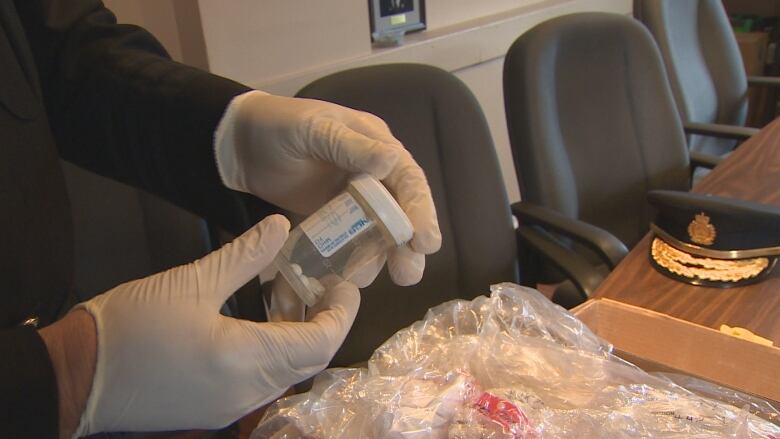Prepping for fentanyl at HMP after near-fatal overdose
'Only for the excellent job the staff and nurse did, this person would not be alive today'

When correctional officials found him, his body was just about black, his breathing shallow and his heart rate dropped the result of a lack of oxygen from an opioid overdose.
On April 22, a man serving a weekend sentence at Her Majesty's Penitentiary in St. John's was found overdosing in the prison'sgymnasium where intermittent inmates are held.
"Without a doubt, only for the excellent job thestaff and nurse did, this person would not be alive today,"said Owen Brophy, superintendent of prisons.
Correctional officers did CPR whilea nurse grabbed naloxonean antidote which reverses the effect of an overdoseand administered it several times until the man was revived.

Corrections officials in St. John's are preparing themselves, as morefentanyl overdoses are counted on the northeast Avalon.
Eastern Health said Tuesday there have been 17 reported overdoses, including two deaths.
The inmates coming in, they probably don't know what they're taking.- Owen Brophy,Supt. of Prisons
Starting Monday, all correctional officers and nurses working at the penitentiary will be trained in using naloxone, Brophy said.
"We're in the process now of purchasing gloves for fentanyl, masks and eyewear for all staff," he said.
"The inmates coming in, they probably don't know what they're taking. Our staff, they have no idea what they're facing."
Drugs smuggled in clothing, body cavities
A review is underway to determine how the inmate got the drug in the first place, but it's believed it was consumed after he entered the facility.

Contraband drugs is not a new problem, and one that Brophy considers to be a major challenge for prison staff.
Brophy, who has more than three decades of experience in corrections, said he's seen a shift in the type of drugs taken by inmates.
"Years ago inmates would typically want either marijuana or hash. Now it seems like it's all pills, all medications," he said.
"Every inmate coming in the institutionis strip-searched. Unfortunately, if the drug is hidden in a body cavity the staff's hands are tied."
Often times drugs are sewn in the seam of jeans, bottoms offootwear and inside jackets, he said.
Last year, the Department of Justice and Public Safety purchased uniforms for inmates, something Brophy said has cut down on contraband entering the prison.
- 'It is a fentanyl-related death': St. John's woman 2nd fatal overdose, police say
- 15 overdoses, 1 death in last two weeks prompt warning from Eastern Health
But he said inmates manage to find ingenious ways to get material into HMP such as coordinating with the outside to get drugs over the wall of the prison or inserting drugs between pages of a greeting card.
"The longer they're here, the more you come to realize justhow organized this is," Brophy said.
"We always say they have 24 hours a day to figure this out, and they do. And they're quite good at it."












_(720p).jpg)


 OFFICIAL HD MUSIC VIDEO.jpg)
.jpg)



























































































